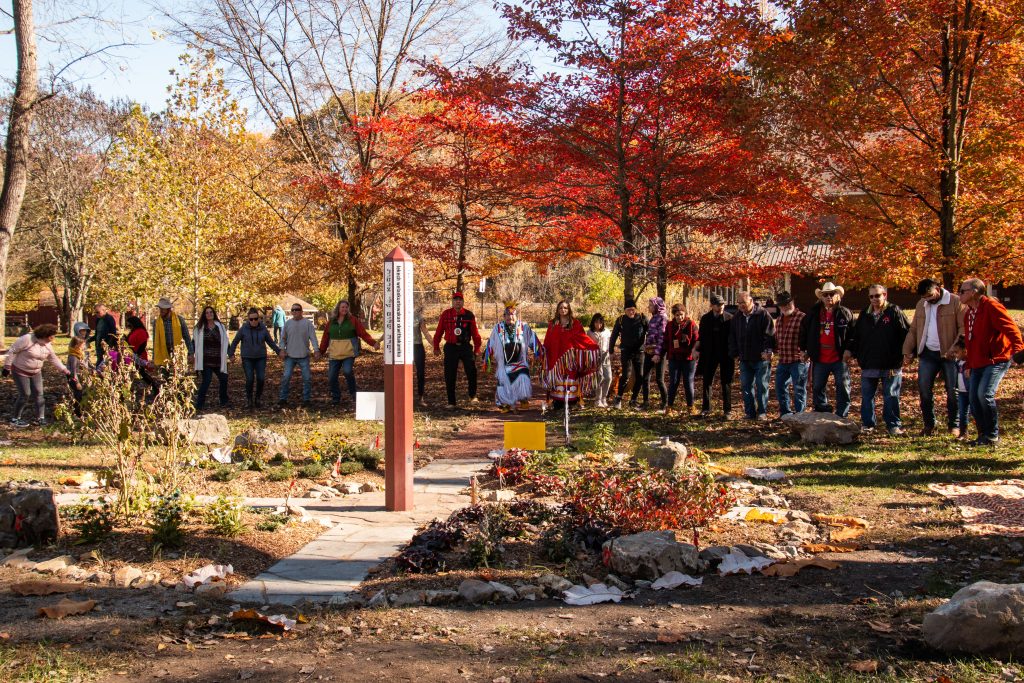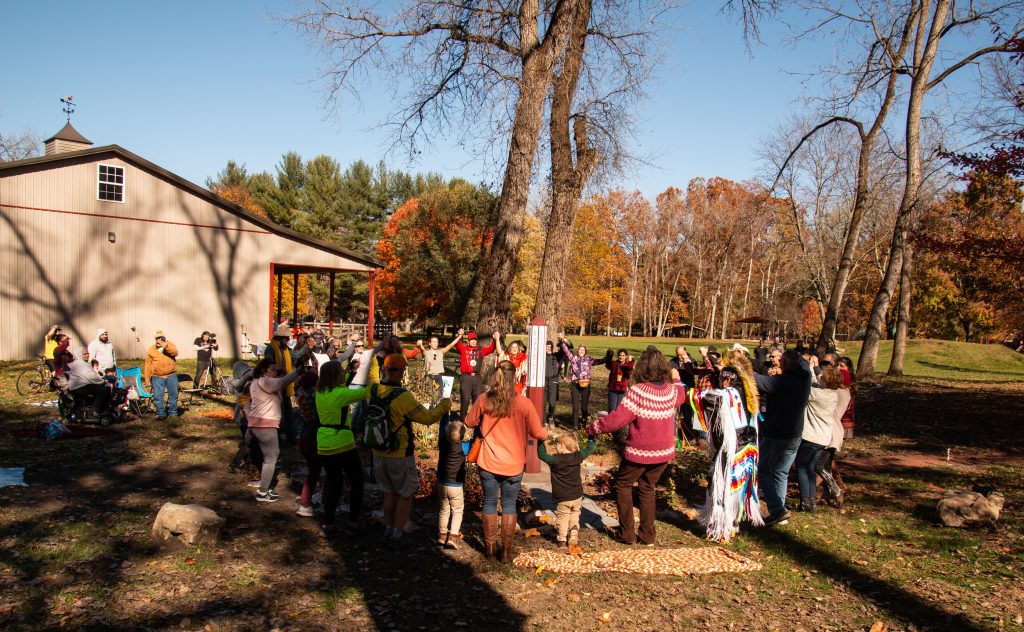The D&L Blog


Take a break from the hustle and bustle this holiday season with a moment of reflection in the recently installed Indigenous Medicine Wheel Garden at Hugh Moore Park* in Easton. Completed with funding support from Lehigh Valley Greenways (LVG) Mini Grant Program, this project serves to connect all people through culture, community, and conservation.
The Indigenous Medicine Wheel Garden is the result of a successful collaboration between the City of Easton, led by Conservation Manager Robert Christopher, and PAZA, Tree of Life, a 501(c)3 national intertribal support organization dedicated to the revival of Native American culture and wisdom and inter-tribal healing and connection.
“It was probably the most fulfilling project I’ve ever done with the city,” says Christopher. “They’re all important, but the aspects within this project were so deep. I’m glad it can now be shared with so many people.”

Just follow the feather-lined “red road” to the Medicine Wheel Garden to explore the rich layers of symbolism, tradition, and ecologic wisdom that await.
Here you will find a circle of stones containing four pie-shaped quadrants with native plants boasting herbal or medicinal uses. These quadrants are intersected by a Pennsylvania bluestone path, leading to and surrounding a Peace Pole at the garden’s center. In eight different languages the pole proclaims, “Let Peace Prevail on Earth.”
Maria Ragonese, Director of Administration & Program Development for PAZA, says of the garden, “It was more than I ever thought it was going to be.”
She points out the opportunities for education, events, and programming inspired by the project moving forward, are as endless as the wheel itself.
But you don’t have to wait for any special events to enjoy the garden. It’s here waiting for you all year long! And ancient wisdom reminds us that winter is the perfect time for solitude and reflection, before you plant the seeds of spring.
*Following the path towards the National Canal Museum from the public parking lot (passing under the iron gates), the Indigenous Medicine Wheel Garden is located on the grounds between the Museum building and a red-roofed “barn.”
Written by DLNHC Conservation Coordinator, Brit Kondravy










